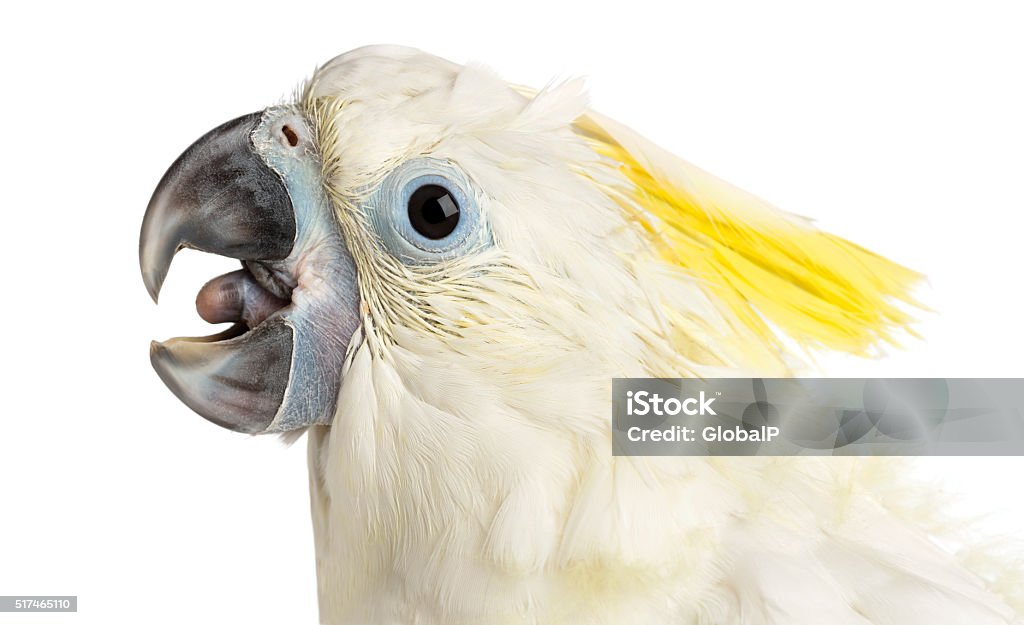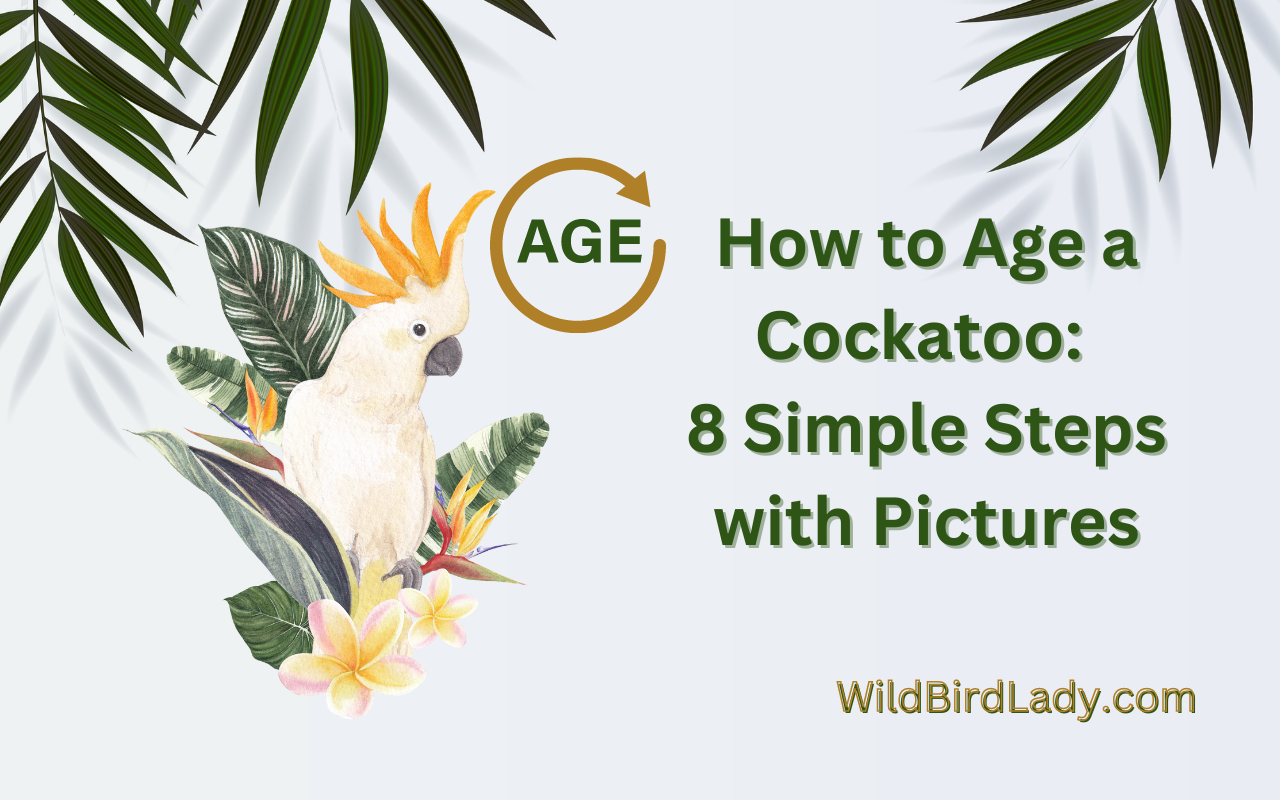To determine the age of a cockatoo, look for physical characteristics such as eye color, feather condition, and the presence of a molt line. Cockatoos are fascinating animals that can live up to 70 years or more.
Knowing the age of your pet cockatoo is important for providing proper care and nutrition. While determining the age of a young cockatoo is relatively easy, it becomes more challenging as the bird ages. This article will guide you through the eight steps to identify the age of a cockatoo, along with pictures to help you differentiate between various age groups.
By following these steps, you can accurately determine the age of your cockatoo and ensure that they receive the best possible care.

Credit: www.istockphoto.com
Understanding The Basics Of Cockatoo Aging
Cockatoos are long-living birds, and they can live up to 80 years under favorable conditions. Therefore, it is essential to know about their physical changes as they age. Proper aging awareness will help identify the ideal time for their veterinary check-ups, diet changes and enable you to prepare their environment according to their needs.
Plumage
Cockatoos go through various changes in their plumage as they grow old. Here are some things to watch out for:
- Feathers gradually lose their brightness and become tattered.
- The white feathers on the bird’s head become dull and sometimes turn yellow.
- Feathers on the wings turn brittle and lose their primary flight feathers.
- Feathers around the eyes turn white, especially in older cockatoos.
Eyes
Cockatoo eyes reflect their health and age. Here is how you can perceive changes in their eyes:
- Eye color can change to a darker shade of brown as they age.
- Pupil size decreases as cockatoos age.
- The area around the eyes may become pinkish or develop some growth, which needs veterinary attention.
Beak
Cockatoos use their beaks as their primary tool to eat and interact with their surroundings. Here are some changes that occur in their beaks across time:
- Beaks become more extensive, thicker and brittle with age.
- They may develop scaly patches on their upper beaks.
- You may notice increase grooves in old cockatoos beaks.
Feet
Cockatoo’s feet are their most prized possessions, enabling them to grasp branches, hold food and move around efficiently. Here’s what to watch out for:
- Feet may look drier, and the skin covering them may become thick as they age.
- Joint problems sometimes affect the cockatoo’s feet, which can make them limp or lame.
Behavioral Cues
Apart from physical changes, it is always crucial to look for changes in your cockatoo’s behavior. Here are some things to look out for, indicating your cockatoo may need special care:
- Cockatoos become less active and prefer resting instead of playing.
- You may notice frequent bad moods or occasional mood swings.
- You may experience changes in appetite, which can indicate dental problems.
Cockatoo aging is a remarkable but essential process to understand for any owner who wants to ensure their bird a healthy and long life. With these simple steps, you should have a better understanding of your cockatoo’s aging process and how to provide the care they require.
Step-By-Step Guide To Age A Cockatoo
Keeping pets comes with a significant responsibility, ensuring that they are happy, healthy, and secure. Cockatoos are one of the most common pet birds, mainly due to their playful and affectionate nature. But did you know that it’s essential to know the age of your cockatoo to provide proper care and attention?
In this blog post, we’ll go over eight simple steps with pictures to determine the age of your cockatoo. Keep reading to learn more!
Step 1: Observing The Plumage
The feathers and plumage of a cockatoo can reveal a lot about their age. Follow these guidelines:
- Juvenile cockatoos have a shorter tail and look fluffier than adults.
- Younger cockatoos have more vibrant plumage than an older cockatoo.
- Look for a clear distinction between feather colors; young ones have more contrasting colors than older ones.
Step 2: Examining The Eyes
Next, you should examine your bird’s eyes as they can help you estimate their age. Here’s what to look for:
- Young birds have dark eyes almost like a black color.
- As they age, the eye color changes from dark/black to medium brown, and finally, pale yellow as they mature.
- Elders have pale yellow or white eyes.
Step 3: Inspecting The Beak
Inspecting the bird’s beak is another way to estimate a cockatoo’s age. Here are the indications:
- Young bird’s beaks have a smooth texture, a matte finish, and a lighter color than older ones.
- Elder birds’ beaks have rough, bumpy texture, darker pigmentation, and a shiny finish.
Step 4: Examining The Feet
A bird’s feet can be a crucial indicator of their age. Here’s what you should look for:
- Young birds have smooth feet with soft scales; their claws usually have a thinner, pointy shape.
- Elder birds have thicker, harder scales, and the claws may look blunt.
Step 5: Behavior Analysis
Cockatoos are highly emotional creatures, and their behavior can help you determine their age. Take note of:
- Young cockatoos are more active, curious, playful, and sometimes destructive.
- Older ones are usually calmer, less active, and more reserved.
Step 6: Dna Testing
If you’re unsure about your bird’s age, consider getting a dna test. You can find dna testing services for birds online or through your veterinarian.
Step 7: Consult With An Avian Veterinarian
Your local avian veterinarian is an excellent resource for determining your bird’s age. They can perform a comprehensive physical examination and provide you with an accurate estimate.
Step 8: Putting It All Together
By following these simple steps, you can get a good idea of your bird’s age. Remember that these indicators are just estimates, and it’s best to consult with a veterinarian if you’re unsure. Proper care and attention are essential for maintaining your bird’s health and happiness, regardless of its age.
Factors That May Affect Cockatoo Aging
Cockatoos are intelligent creatures, and their lifespan can be influenced by various genetic, environmental, and health factors. In this section, we will discuss how these factors can impact their aging process.
Genetic Factors
Genetics plays an essential role in determining a cockatoo’s lifespan. The species, family history, and lineage all affect a cockatoo’s lifespan. Most cockatoos can live from 30 to 70 years, and a few can live for over 100 years. Below are some factors that affect a cockatoo’s lifespan:
- Species of a cockatoo
- Family history
- Lineage
- Inbreeding
Environmental Factors
External factors can impact a cockatoo’s lifespan as much as genetic factors. A poorly maintained habitat or toxic environment can harm a cockatoo, leading to shorter life expectancy. Below are some environmental factors that impact a cockatoo’s lifespan:
- Diet
- Temperature
- Air quality
- Light exposure
Health Factors
Cockatoos can be prone to specific health issues as they age. Paying attention to the symptoms can ensure early detection of any potential problems. Being proactive can help extend your cockatoo’s lifespan. Below are some health concerns that can affect a cockatoo’s lifespan:
- Reproductive issues
- Obesity
- Nutritional imbalances
- Chronic respiratory issues
By paying attention to genetic, environmental, and health factors, you can help ensure your cockatoo lives to a ripe old age. Being aware of risk factors and taking precautions can make all the difference in your pet’s life.
Frequently Asked Questions For How To Tell The Age Of A Cockatoo: 8 Steps (With Pictures)
How Can I Tell The Age Of My Cockatoo?
The condition of the bird’s feathers and eyes will give you a clue. The eyes of younger cockatoos are darker in color and have a more noticeable ring. As birds age, their feathers can change color, become dull, and wear down.
Can I Tell The Age Of A Cockatoo By Its Behavior?
The bird’s behavior can give you an idea of its age. Young cockatoos are more energetic and curious, while mature ones are more relaxed and affectionate. But behavior, alone, isn’t an accurate way to determine an exact age.
Is It Possible To Tell The Age Of A Cockatoo By Its Beak?
A cockatoo’s beak growth can give you a hint about its age. Young birds have a smooth beak and might have a bluish or pinkish tint. As they age, the beak will become more textured and turn a slate gray or black color.
Can A Veterinarian Determine The Age Of A Cockatoo?
A veterinarian can give you a more accurate idea about your cockatoo’s age. The vet can check the bird’s overall health, examine its eyes, beak, feathers, and take its history. Based on that information, they can estimate an age range.
What’S The Average Lifespan Of A Cockatoo?
The average lifespan of a cockatoo is 40 to 60 years, but they can live up to 80 years. The lifespan of a bird depends on several factors, such as genetics, diet, exercise, medical care, and environment.
Conclusion
To conclude, determining the age of a cockatoo can be quite challenging, but with the right knowledge and careful observation, it is possible. By examining the feathers, beak, eyes, and overall behavior of the bird, you can make an educated guess about their age.
Remember to take note of any unique markings or changes in their appearance over time, as this can also give you clues about their age. Additionally, it is essential to provide your cockatoo with proper care, nutrition, and a stimulating environment, regardless of their age.
With these eight steps and a little bit of patience, you can better understand and care for your beloved feathered friend. Keep in mind that each cockatoo is unique, so it is always best to consult with a vet or avian specialist for specific advice regarding your bird’s health and wellness.
Latest Posts
The Ultimate List: Top 8 Best Birdwatching Podcasts for Avid Birders
Looking for the top birdwatching podcasts? Here are the eight best options to tune into today! Birdwatching can be a thrilling, immersive experience that brings...
Stop Squirrels in Their Tracks: 10 Effective Ways to Safeguard Your Bird Feeder Pole
To prevent squirrels from climbing your bird feeder pole, use squirrel baffles and slippery poles. Here are ten effective ways to keep squirrels from stealing bird food and damaging bird feeders. ...


